The moral of this story is simple: Do not let non-motorcycling bureaucrats run a motorcycle company.
Ducati had a pretty successful run from its inception in 1946, especially after it introduced the Diana 250 single to the American market in 1961. However, financial problems cropped up in the early ’70s and, in the typical Italian way, the government stepped in to save the company. The new board, a governing body made up of gentlemen in Brioni suits, knew little about the realities of motorized two wheelers.
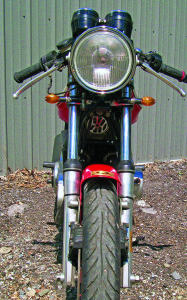
Although Ducati had made its reputation on singles, the board decided to phase them out after 1974…and replace them with 350 and 500 parallel twins. The idea of a 350cc bike was sensible, as the government provided a huge tax break for motorcycles under that size. And building a 500 version would be inexpensive, as all the hard work would have gone into the 350.
But a parallel twin? The board’s thinking was simple, too simple: If the Japanese could sell a lot of parallel twins in Italy, even with the heavy Italian taxes on imports, then the Italian industry should copy them. Nobody has ever stood up to take the blame for this fiasco, but the suits had no idea what was really driving the market for Italian motorcycles: sporting semi-exotica, like Ducati’s 750SS, Laverda’s 750 SFC, Moto Guzzi’s V7 Sport and Benelli’s 750 Sei, all seriously exciting machines.
The motorcycle market in Italy—and Europe in general—was changing. Insofar as basic transportation went, a Fiat 600 could do the job better than any motorcycle, being able to carry four people and keep them dry in the rain. For urban use, a Vespa would do nicely.
The suits were adamant, and the order was given to develop a parallel twin—and keep the costs down. Renowned engineer Fabio Taglioni, the originator of Ducati’s desmodromic drive, did let it be known that he wanted nothing to do with this project and spent his time working on a smaller capacity L-twin.
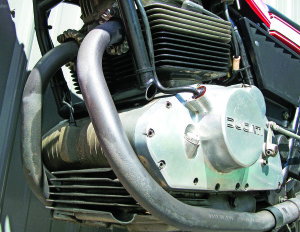
The first versions of the parallel twin were designated as GTLs—Gran Turismo Lusso—and a boring engine combined with boring styling left them gathering dust in the back of showrooms. The styling was the work of one Giorgetto Giugiaro, an automobile designer contracted from Italdesign to do the look. He had previously been hired to do the 850 GT, which won no styling plaudits and, seemingly unable to forget four wheels, made a very slab-sided machine, which nobody seemed to like. And he did the same for the GTL, invoking a lot of angles rather than curves.
Instead of a dramatic power-packed engine that the sporting crowd expected from Ducati, this little powerplant looked squat and stolid. The engine was decidedly oversquare on both the 350 and 500, with alloy cylinders—cast as one piece—having replaceable liners. No bevel-drive overhead camshafts here, but an invisible chain between the cylinders ran a single overhead camshaft operating two valves per cylinder. The pistons rotated 180 degrees from each other, which meant the engine smoothed out at speed but vibrated a lot at lower revs; this was a consistent weakness to potential buyers. The crankcases seemed rather oversized for the modest displacement; tough they might be, but the general view was too much engine, too little bike. Down at the bottom, the crankshaft ran on plain bearings and seemed to be quite solid. The transmission could definitely have used a sixth gear.
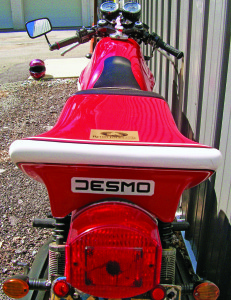
Since this was to compete with the Japanese, an electric starter was mandatory. But just to appease the old fogies, who were nervous about such advances, a kickstarter was included.
The chassis on the GTL was adequate, with a single downtube to the front of the engine, but hardly inspiring. This was intended to be a workaday bike, utilitarian, a variety that was falling out of favor with the motorcycling crowd. Ducati had hoped to attract a new breed of buyer with this bike, but the new ones weren’t coming, and the Ducatisti thought it a slug.
This is where the Sport Desmo comes in. Management finally came to its senses after two years of bad sales, asking Taglioni to please beef up the engine and turning the chassis design over to a fellow named Leopoldo Tartarini, who ran his own successful firm, Italjet. In the early ’70s, Tartarini had bought a good many British engines from Triumph and Velocette and bolted them into his own frames.
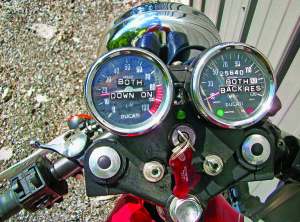
Taglioni immediately turned to his mystical desmodromic valve actuation and redesigned the heads. He also used a pair of 30mm Dell’Orto carburetors to feed the combustion chambers, where the fuel was compressed with a 9.6:1 ratio. This allowed the engine to rev more easily; horsepower figures for the motor are hard to find, but 53 horses at 9,000 rpm could be considered. However, in keeping with the overly square engine, power was found only in the last 2,000 rpm. A whole slew of go-faster options were also offered.
It was Tartarini who had the major fun. For the Sport Desmo, the seat got racing styling, with an upturn where a passenger might sit. To add to the sporting image, the footpegs were set back and clip-ons replaced the previous flat handlebar. Fenders were abbreviated and the gas tank was given appropriate curves. The exhaust system was all black. He revised the frame, this one with twin downtubes going to the engine, all the better to get around the corners. He tossed the spoked wheels and put on attractive Borrani cast-alloy items, with six spokes. Marzocchi shock absorbers and fork handled the suspension quite well, and three Brembo discs, 260mm each, brought the Sport Desmo to a quick halt. Dry weight was a shade over 400 pounds.
Unfortunately, all this added to the price tag. And the Sport Desmo was a little too sporty for some, especially those who wanted to have a young lady hanging on tightly. So the final iteration was the 1977 GTV, which came with a longer seat, passenger pegs and flat bars—a melding of the GTL and the Sport Desmo.
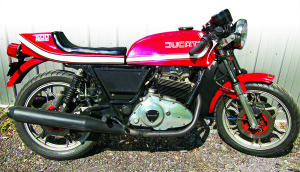
Then in 1978, Taglioni’s half-liter L-twin came on the market, the Pantah 500 SL, which later grew to 600 and 650 sizes. What little interest there had been in the parallel twins soon vanished.
Note: If any reader would like to ride this little Ducati, it is for hire from retrotours.com.
(This Retrospective article was published in the May 2013 issue of Rider magazine.)








Having owned a Desmo parallel twin I can tell you that the major flaw was that it was overweight at over 400 pounds. A lot of this was due to the dual Brembos and those horrid solid wheels. The large battery and electric start did not help. It looks a lot better without that upturned saddle. The frame was incredible and the bike was stable at any speed. The riding position was unfortunate and the clip ons gave one poor leverage when trying to get it on the center stand. It seemed like Ducati saw the Japanese selling boring bikes with overly complex electrical systems and tried to outdo them. The sport model was the silk purse that had remnants of the pig’s ear. Now the Japanese copy everyone, having an offering in any style as long as it is not light, simple and sporting. That division has been abandoned by everyone.
the cam chain tensioner failed to work, requiring the engine to be removed from the frame. That was quite a normal problem, and since no Japanese engine was likely to need such a repair probably for the life of the bike, they were not long lasting. The engine performance was ‘unremarkable’.
Just by interests on Ducatis I came on this page. Just want to correct one thing. Also the most common Honda CB350 has its most common problem in the ohc cam chain tensioner. It went to rubber pieces and made lot of noise after a few 10k miles. I had to change it two or three times in my 1972 CB350. If I remember right it is not an engine out of the frame thing to replace but very tedious because the lower tensioner is attached below the cylinder barrel block. Actually far easier if one takes the engine off, it is only a few bolts more. Actually it was the only repeating problem in my CB350 engine. AFAIK I am not the only one.
the Ducati tensioner required the engine to be removed from the frame, as I recall ( almost 40 yrs ago) the tensioner was a crappy design that ran out of length to tension in a short time , less than 10K miles for sure, based on 2 bikes bought by 2 brothers at the time. I am now thinking the chain probably stretched excessively. I do not recall thinking any rubber parts had been the problem. The brothers were soon done with their bikes and Ducati was done with the design also. We thought the frame handled well, I remember wondering what other, reliable engine might be fitted in the frame, like maybe a 2 stroke twin? The frame did not have vertical room for any 4 stroke engine I was aware of.
I also vaguely recall that at the time there was the claim Ducati got the parallel twin design from some other failing Italian company.